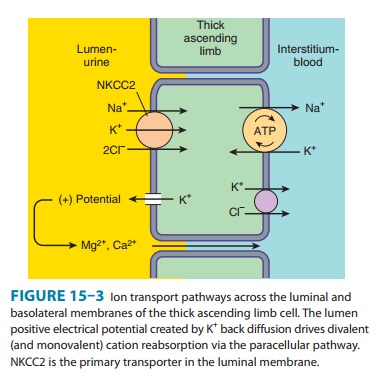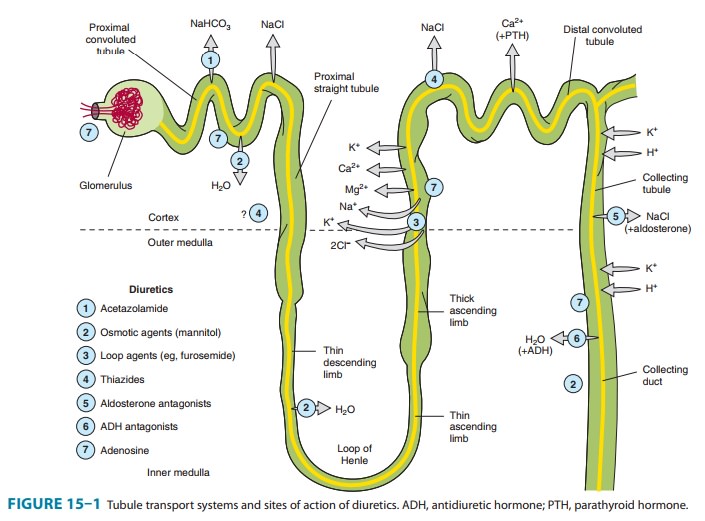Chapter: Basic & Clinical Pharmacology : Diuretic Agents
Loop of Henle - Renal Tubule Transport Mechanisms
LOOP OF HENLE
At
the boundary between the inner and outer stripes of the outer medulla, the
proximal tubule empties into the thin descending limb of Henle’s loop. Water is
extracted from the descending limb of this loop by osmotic forces found in the
hypertonic medullary interstitium. As in the proximal tubule, impermeant
luminal sol-utes such as mannitol oppose this water extraction and thus have
aquaretic activity. The thin ascending
limb is relatively water-im-permeable but is permeable to some solutes.
The
thick ascending limb (TAL), which follows the thin limb of Henle’s loop,
actively reabsorbs NaCl from the lumen (about 25% of the filtered sodium), but
unlike the proximal tubule and the thin descending limb of Henle’s loop, it is
nearly impermeable to water.

Salt
reabsorption in the TAL therefore dilutes the tubular fluid, and it is called a
diluting segment. Medullary portions
of the TAL contrib-ute to medullary hypertonicity and thereby also play an
important role in concentration of urine by the collecting duct.
The
NaCl transport system in the luminal membrane of the TAL is a Na+/K+/2Cl−
cotransporter (called NKCC2 or NK2CL) (Figure 15–3). This transporter is selectively
blocked by diuretic agents known as “loop” diuretics. Although the Na+/K+/2Cl−
transporter is itself electrically neutral (two cations and two anions are
cotransported), the action of the transporter contrib-utes to excess K+ accumulation within
the cell. Back diffusion of this K+ into the tubular
lumen causes a lumen-positive electrical poten-tial that provides the driving
force for reabsorption of cations— including magnesium and calcium—via the
paracellular pathway. Thus, inhibition of salt transport in the TAL by loop
diuretics, which reduces the lumen-positive potential, causes an increase in
urinary excretion of divalent cations in addition to NaCl.

Related Topics